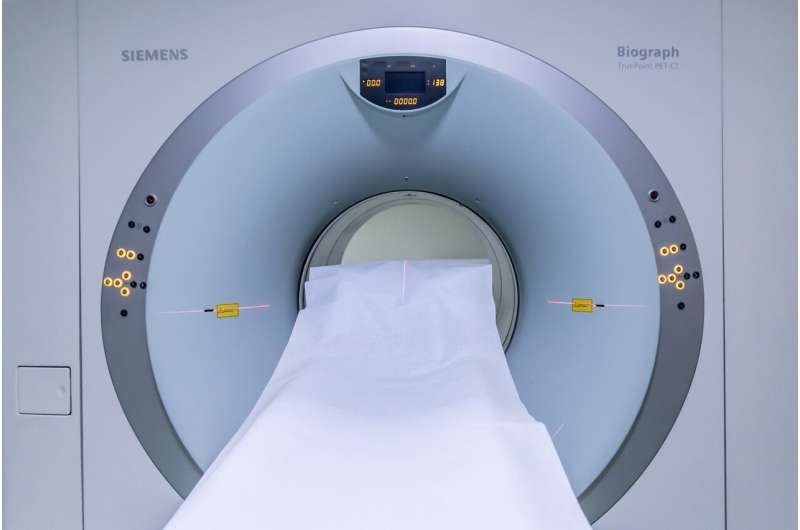This article has been reviewed according to Science X's editorial process and policies. Editors have highlighted the following attributes while ensuring the content's credibility:
fact-checked
peer-reviewed publication
trusted source
proofread
Researchers discover a significant problem in brain imaging and identify a fix

In a new study, investigators from McLean Hospital, Harvard Medical School and the National Institute on Drug Abuse—Intramural Research Program (NIDA-IRP) have discovered that the tendency of people's arousal to wane over the course of brain scans has been distorting the brain connection maps produced by functional magnetic resonance imaging (fMRI).
The team found that as people's arousal levels dwindle during an fMRI, such as if they become more relaxed and sleepy, changes in breathing and heart rates alter blood oxygen levels in the brain—which are then falsely detected on the scan as neuronal activity.
The work appears in Nature Human Behaviour.
"You're laying down in a snug scanner for quite some time, often with only a low-engagement button press task to attend to or nothing to do at all, as the scanner monotonously hums and vibrates around you," said first author Cole Korponay, Ph.D., a research fellow at the McLean Hospital Imaging Center. "These arousal-dampening conditions create the illusion that people's brain connection strengths continuously inflate throughout the scan to help better connect the ideas."
fMRI scans are commonly used to non-invasively map brain connectivity in a variety of situations, including planning for surgery, understanding the impact of a stroke, and studying how mental illness affects neurological function. However, since fMRI relies on changes in brain blood oxygen to indirectly measure neuronal activity, it is vulnerable to "noise" from other processes that can affect blood oxygen—such as changes in breathing and heart rates.
And because breathing and heart rate patterns are closely tied to arousal levels, changes in arousal can introduce significant noise into fMRI data. Problematically, the conditions of an fMRI scan tend to progressively lull people into lower arousal states.
In the present study, the research team identified a specific blood flow signal that seemed to track both the decline in subject arousal levels and the illusory inflation of functional brain connection strengths. This non-neuronal, physiological noise signal—termed the "systemic low frequency oscillation" (sLFO) signal—grew over time during scanning, in a spatial and temporal pattern that tightly matched the pattern of the connection strength increases.
The researchers then demonstrated that a method called RIPTiDe, developed by co-senior author Blaise Frederick Ph.D., an associate biophysicist at the McLean Imaging Center, to remove the sLFO signal from fMRI data, was able to eliminate the illusory connection strength increases.
"By adopting this sLFO denoising procedure, future studies can mitigate the distortive effects of arousal changes during brain scans and enhance the validity and reliability of fMRI findings," said Korponay.
More information: Brain-wide functional connectivity artifactually inflates throughout functional magnetic resonance imaging (fMRI) scans, Nature Human Behaviour (2024). DOI: 10.1038/s41562-024-01908-6. www.nature.com/articles/s41562-024-01908-6





















